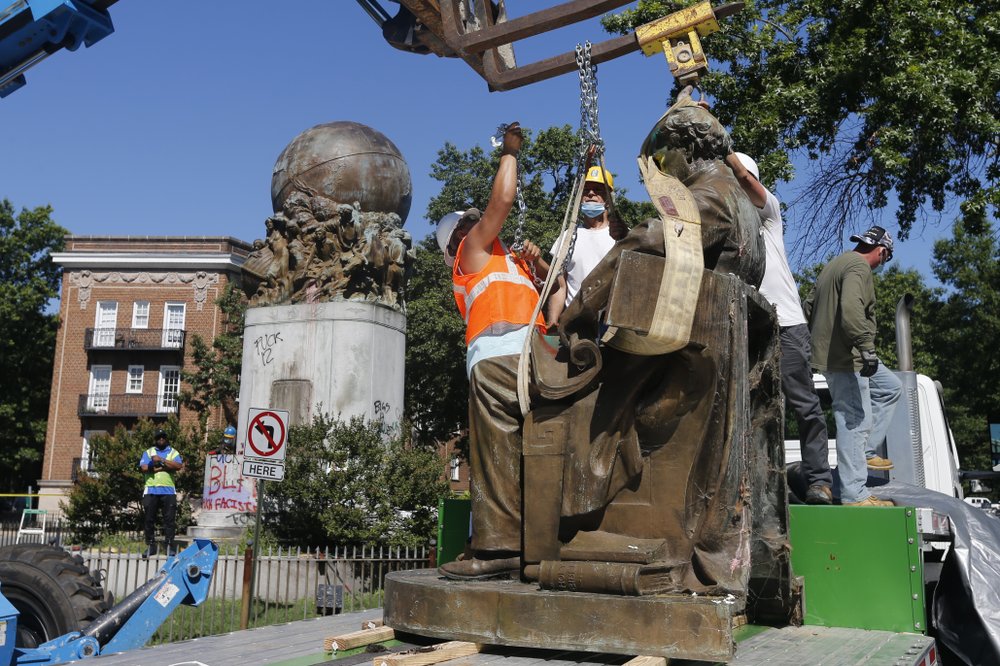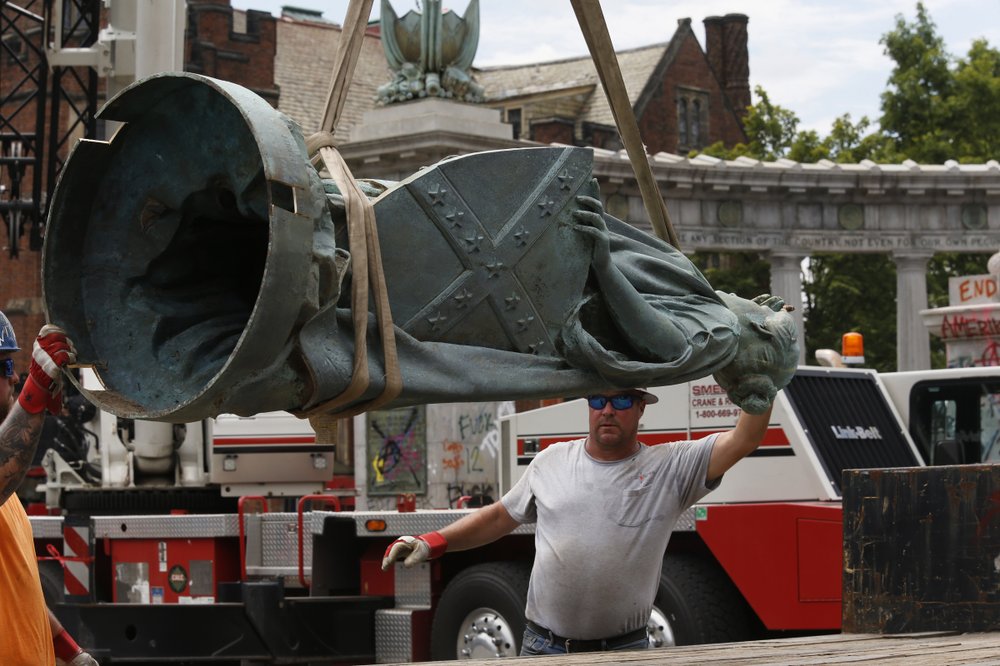Judge blocks removal of more Confederate statues in Richmond
A judge issued the decision after a hearing in a lawsuit filed by an unnamed plaintiff

RICHMOND, Va. (AP) — A judge issued an injunction Thursday barring the city of Richmond from removing any more Confederate monuments, a process that began last week after Mayor Levar Stoney ordered the statues cleared away amid weeks of protests over police brutality and racism.
Richmond Circuit Court Judge Bradley Cavedo issued the decision after a hearing in a lawsuit filed Tuesday by an unnamed plaintiff, local media outlets reported. The lawsuit asked for an emergency injunction to halt the removal of the statues and alleged that Stoney violated state law by ordering their immediate removal.
“We disagree. We’re disappointed. We did the right thing,” Jim Nolan, Stoney’s spokesman, said in a statement after Cavedo issued his 60-day injunction.
During Thursday’s hearing, lawyers for Stoney said all the city’s Confederate statues have been removed in recent days, with the exception of one of A.P. Hill, the Richmond Times-Dispatch reported. Hill’s remains are interred beneath the statue, which sits in the middle of a traffic circle.
Read More: Mississippi lawmakers vote to remove Confederate emblem from flag
Some sites where statues have been removed still contain a pedestal or remnants of the larger monument.
Also Thursday, Nolan said that family members of Black humanitarian and tennis legend Arthur Ashe have requested that his statue be removed from Richmond’s prestigious Monument Avenue.
“Ashe family members made the request during the recent period of civil unrest. The matter is still under consideration and we continue to have discussions with the family regarding their wishes,” he said in a statement.
Work to remove the Confederate tributes that dot this former capital of the Confederacy began on July 1, the day a new state law took effect granting local authorities control over war memorials on their property.

Stoney said he was invoking his emergency powers to immediately remove the statues instead of following a lengthy process outlined in the law. He said he was concerned about public safety amid continuing protests and fears that protesters could get hurt if they tried to bring down the enormous statues themselves.
The judge criticized Stoney’s handling of the protests and his decision to remove the monuments, according to the newspaper. It reported that Cavedo said “rioters” were a threat to the public’s safety, not the monuments.
The judge also referred to Hill, as an “American war hero,” TV station WRIC reported.
Among the figures already removed are statues of Gens. J.E.B. Stuart and Stonewall Jackson, and Confederate naval commander and scientist Matthew Fontaine Maury.
Richmond’s largest statue left intact is on state land — a massive monument to Confederate Gen. Robert E. Lee on Monument Avenue. Its planned removal, under the orders of Gov. Ralph Northam, has been blocked at least temporarily by a court injunction also issued by Cavedo.
On Wednesday, an amended complaint was filed in that case. Cavedo had dismissed the first one but said he wanted the plaintiff’s attorney to have “another shot” at addressing issues of legal standing.
The amended complaint lays out in greater detail the family history of the plaintiff — a descendant of a couple who were among the grantors of the land the statue now sits on, which eventually became state property.
The lawsuit alleges that the plaintiff, 69-year-old William C. Gregory, would face “irreparable harm” if the statue were removed. A hearing in the case is expected later this month.
The statues were erected decades after the Civil War, during an era when Southern states were crushing attempts to achieve equality for Black people.
After years of little change, a growing number of these Confederate symbols are being removed, prompted by nationwide protests against police brutality and racism that appear to have inspired a profound shift in American thinking.
